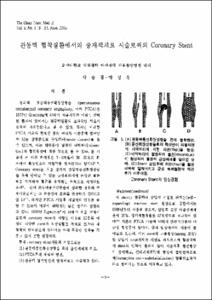韓國傳統建築의 解析과 繼承을 爲한 創造的 『遺傳因子』에 關한 硏究
- Alternative Title
- Genotype and Theoretical Analysis on the Korean Tradition Architecture
- Abstract
- 우리의 傳統建築에 있어서 샤아머니즘的 宗敎意識과 農經社會의 影響에 依하여 一定한 Pattern Language가 形成되었다. 文化人類學的으로 建築이 차지하고 있는 Pattern Language의 先驗的인 建築計劃의 原理는
첫째, 風水地理說에 依한 原理였으며
둘째, 生活慣習에 依한 態度와 社會位階的 空間構成·分割의 原理였다.
그러므로 傳統建築을 繼承하기 爲하여 그 原理의 構成困子 가운데 ?巳肪? 再創造할수 있는 GENOTYPE를 抽出해 내는 일이다.
즉 G₁; [김치] [깍두기] [된장찌개] 등의 語彙에 깃들어 있는 韓國의 土着的인 情趣와 같이 先人들의 抒情이 깃든 建築空間-[온돌] [내청마루] [튓마루] [마당] [처마] [토방] [다락방] [벽장]의 原型的 Pattern Language를 Design Factors로서 現代建築에 表出시킨다.
G₂: 外形的으로 追求된 風水地理의 建築的 原理를 形式論理로서 채택한다.
G₃: 모듈·抽象的인 形態美學·平面構成의 妙·外部空間構成의 理
Religious feeling from shamanism and an agricultural economy society affected our traditional architecture to form a "Pattern Language" in ancient times.
From the point of view of cutural anthropology, the Pattern Language has based on by the original properties, built up by arthitectural activities, and maintained by the transcendental principles of architectural design.
These principles (1) have a kind of the symbolic theory through Pungsujirisul, (2) reflect the theory about the composition and arrangement of space determined by the hierarchy of social class consciousness and the rules of human settlements.
In fact, these principles imply some eleiments {GENOTYPE] that are able to lead to the method for transmitting thus from generation to generation in Korea.
G₁) Assumes the archetype of architectural spare in Korea i.e. Ondol·Daechung· Maru·Bygjang·Tobang·Toitmaru·Madang·chuma, as well as the feelings will be characterized in our minds of "Kimchi" "Kaccdugi" and so on.
G₂) Assumes the architectural theory of pungsujirisul.
G₃) Assumes Module, Form Gestaltung, Space Combination in Floor Plan and Exterior Space Design.
Religious feeling from shamanism and an agricultural economy society affected our traditional architecture to form a "Pattern Language" in ancient times.
From the point of view of cutural anthropology, the Pattern Language has based on by the original properties, built up by arthitectural activities, and maintained by the transcendental principles of architectural design.
These principles (1) have a kind of the symbolic theory through Pungsujirisul, (2) reflect the theory about the composition and arrangement of space determined by the hierarchy of social class consciousness and the rules of human settlements.
In fact, these principles imply some eleiments {GENOTYPE] that are able to lead to the method for transmitting thus from generation to generation in Korea.
G₁) Assumes the archetype of architectural spare in Korea i.e. Ondol·Daechung· Maru·Bygjang·Tobang·Toitmaru·Madang·chuma, as well as the feelings will be characterized in our minds of "Kimchi" "Kaccdugi" and so on.
G₂) Assumes the architectural theory of pungsujirisul.
G₃) Assumes Module, Form Gestaltung, Space Combination in Floor Plan and Exterior Space Design.
- Issued Date
- 1980
- Type
- Research Laboratory
- Alternative Author(s)
- Lee,Bae-Hwa
- Publisher
- 연구논문집
- Language
- kor
- Rights
- 울산대학교 저작물은 저작권에 의해 보호받습니다.
- Citation Volume
- 11
- Citation Number
- 1
- Citation Start Page
- 107
- Citation End Page
- 119
- Appears in Collections:
- Research Laboratory > University of Ulsan Report
- 파일 목록
-
-
Download
 000002023895.pdf
기타 데이터 / 306.64 kB / Adobe PDF
000002023895.pdf
기타 데이터 / 306.64 kB / Adobe PDF
-
Items in Repository are protected by copyright, with all rights reserved, unless otherwise indicated.